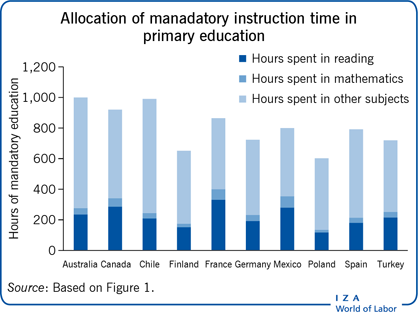Elevator pitch
Increasing instruction time might seem a simple way to improve students' outcomes. However, there is substantial variation in its effects reported in the literature. When focusing on school day extensions, some studies find no effects, while others find that an additional hour of daily instruction significantly improves test scores. A similar pattern arises when examining the effect of additional days of class. These mixed findings likely reflect differences in the quality of instruction or in the activities that are being replaced by additional instruction. Hence these elements need to be considered when designing policies that increase instruction time.

Key findings
Pros
Increasing instruction time can significantly improve students' performance.
Using additional time to reinforce content seems to help reduce inequality on test scores.
Reducing absences is an effective way of increasing instruction time and improving students' performance.
Returns to instruction time are greater in schools that offer a better learning environment, and in those that have greater autonomy.
Instruction time extensions can reduce teenage pregnancy and youth crime.
Cons
Increasing instruction time does not necessarily generate large gains in students' performance.
It can be expensive to increase instruction time.
Implementing instruction time changes can be difficult and some schools might struggle to adapt.
Using additional time to cover new content seems to be more beneficial for high-performing students, increasing both within and between school inequality.
Extending instruction time too much could be detrimental.